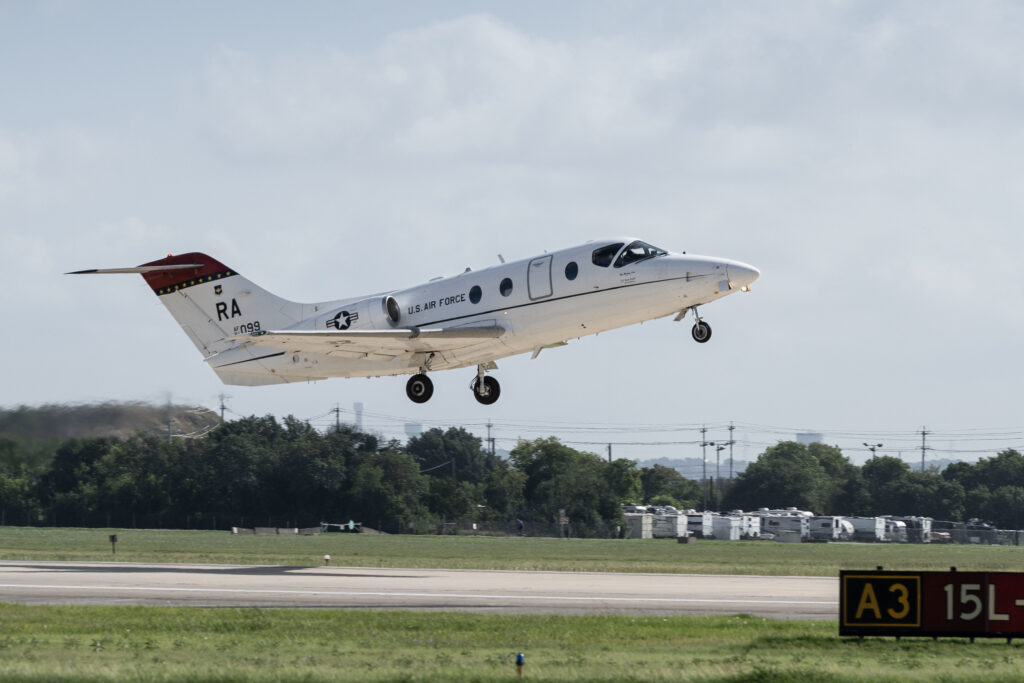
The United States Air Force’s T-1A Jayhawk made its final flight with the 99th Flying Training Squadron on July 15. The squadron operates out of Joint Base San Antonio-Randolph in Texas.
The T-1A Jayhawk, a military version of the Beechjet 400A, began operations in the early 1990s. The Jayhawk has been used to train pilots to fly various military aircraft, including the C-17 and C-130 transport aircraft, and the KC-135 aerial tanker. The T-1A is also used at Columbus AFB, Miss., Laughlin AFB, Texas, and Vance AFB, Okla., according to the Air Force. It is also used at Naval Air Station Pensacola, Fla., for combat systems officer training.
The T-1A’s retirement from the 99th Flying Training Squadron is part of the Air Force’s effort to transition to the new T-7A Red Hawk, made by Boeing. The T-7A has faced delays and is not expected to reach initial operational capability until the early 2030s.
Despite the delays, the Air Force has been pushing to retire its legacy T-1A fleet. The service sought to retire 50 aircraft in FY23, but Congress blocked retirement until the service implemented its new undergraduate pilot training (UPT) 2.5 program and provided an anticipated date for T-7A full operational capability.
Last year’s FY24 budget request also proposed retiring 52 T-1As. Again, the FY24 National Defense Authorization Act prevented the Air Force from retiring any aircraft until the service confirmed fleet-wide implementation of the new UPT curriculum and assessed how T-1A retirements would impact the number pilots that are able to complete training. Air Force Secretary Frank Kendall sent letters to Congress in April certifying full implementation of the new UPT curriculum and informing them that T-1A retirements would not impact ongoing pilot training.
The Air Force recently outlined a plan to divest its entire T-1A fleet by 2026, despite delays with the T-7A. The service hopes the retirements will help free up funding to inject into Red Hawk production.
Shaun's deep-rooted interest in military equipment continues in his role as a senior defense analyst with a focus on the United States. He played an integral role in the development of Forecast International's U.S. Defense Budget Forecast, an interactive online product that tracks Pentagon acquisition programs throughout the congressional budget process. As editor of International Military Markets – North America, Shaun has cultivated a deep understanding of the vast defense markets in the United States and Canada. He is a regular contributor to Forecast International's Defense & Security Monitor blog and has co-authored white papers on global defense spending and various military programs.



